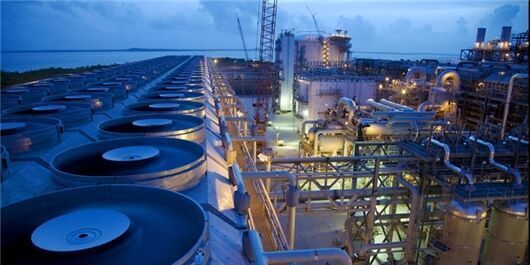Ali-Reza Sadeq-Abadi has said the figure would reach 2.4 mb/d by next March.
Iran’s petroleum industry has been hit with the toughest ever sanctions since US President Donald Trump unilaterally pulled out of the six-nation Iran nuclear deal. Trump has been seeking to bring Iran’s oil exports down to zero; however, Iran’s Petroleum Ministry had made necessary arrangements well before the sanctions were imposed in order to blunt the impact of sanctions on the country’s petroleum industry. One of such policies was to increase the crude oil refining capacity and preventing the sales of crude oil.
As new development phases of the giant offshore South Pars gas field have come online under the administration of President Hassan Rouhani, Iran’s gas production capacity has reached 800 mcm/d. Moreover, due to the development of shared fields in the West Karoun area, Iran’s crude oil production capacity has experienced a big jump.
In parallel, petrochemical development, as well as refinery enhancement projects have been among key policies of the Petroleum Ministry in recent years.
Despite the US’s attempts to zero Iran’s oil exports in the past one year, this objective has not been achieved in practice. On the contrary, Iran has seen its crude oil refining capacity increase.
Furthermore, the startup of the Bandar Abbas Gas Condensate Refinery, commonly known as the Persian Gulf Star Refinery, has been supplying feedstock for downstream plants to manufacture products with higher value-added.
Crude Oil / Condensate Refining Capacity
Sadeq-Abadi said: “Thanks to planning, 850,000 b/d of crude oil and gas condensate, which the US unlawful sanctions could prevent from entering world markets, has been refined in Iran and converted to products of higher value-added.”
Among the policies the Petroleum Ministry has adopted for boosting the refining capacity of the country are increasing feedstock receipt to take in maximum crude oil and condensate at oil refineries.
The latest data show that the supply of gas condensate to refineries would increase from the current 450,000 b/d to 500,000 b/d and oil supply to refineries would go from 1.7 mb/d to 1.9 mb/d.
Persian Gulf Star Hits 480,000b/d
During the previous round of sanctions imposed on Iran in the final years of the 10th administration, Iran’s gas condensate had remained stored on the water as there was no customer for it. But after Iran’s nuclear deal took effect, the entire stored gas condensate was sold.
Even now that the US has imposed new sanctions on Iran, gas condensate remains a major target because as the South Pars gas output has exceeded 600 mcm/d, more condensate is being produced. To that effect, the Persian Gulf Star refinery was designed to process condensate. The refinery has so far been developed in three phases. The fourth phase has just started up. The facility’s processing capacity has increased from 360,000 b/d to 400,000 b/d.
NIORDC officials have said that the processing capacity would go to 420,000 b/d in August and subsequently 450,000 b/d by October.
Sadeq-Abadi has also said that the Persian Gulf Star’s condensate refining capacity would reach 480,000 b/d by next March.
The Persian Gulf Star refinery is supplying product equal to that of produced by a 1.3mb/d oil refinery. Based on this figure, it can be argued that Iran is the largest producer of high-quality products with high value-added among regional countries.
Iran owes its refining and distribution capacity largely to the Persian Gulf Star refinery as it has added its gas condensate processing capacity by 120,000 b/d, and 300 to 350,000 b/d of more crude oil has been processed by the Abadan, Isfahan, Tehran, Arak, Shiraz and Bandar Abbas refineries.
Strategic Gasoline/Gasoil Reserves
During the previous round of sanctions, in addition to oil and gas condensate, gasoline was also subject to sanctions. But over recent years, as new projects have been implemented at refineries, Iran’s gasoline production capacity has reached 110 ml/d, of which 90 ml/d has sulfur content of less than 10 ppm.
Iran stopped importing gasoline in 2018. That is why the Trump administration did not envisage any gasoline sanctions for Iran.
Sadeq-Abadi has given a positive assessment of Iran’s strategic gasoline and gasoil reserves, comparing it with Iran’s hard currency reserves.
NIORDC is also tasked with supplying feedstock to petrochemical plants. According to official data, NIORDC has surpassed 20-30% beyond its obligations for feeding petrochemical plants.
Courtesy of Iran Petroleum


Your Comment